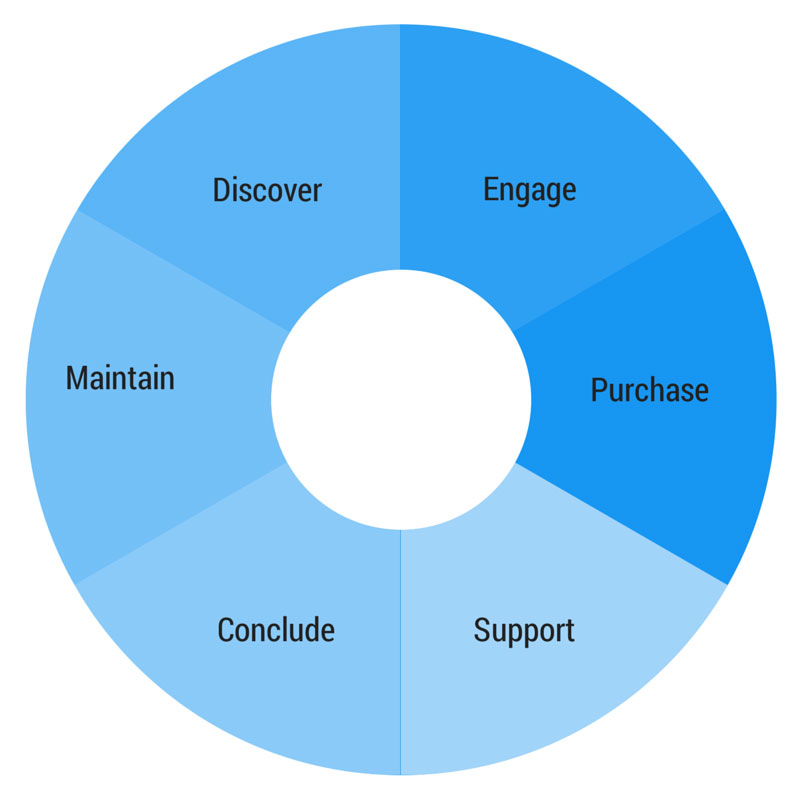Poor customer experience. Remember the last time one of your suppliers made you jump through hoops, just to do business with them?
You started out what you imagined would be a simple enquiry process, only to find the contact details on their website where hidden like Tutankhamen’s treasure. So what do you do? Click on the next supplier on the list, just like everyone else.
Perhaps you have an inkling your own customer experience systems aren’t as smooth as they should be, but you’re not quite sure how or where to start improving them.
The good news is, little tweaks can have a big impact. With a regular review process in place, you can create effortless customer purchase journeys that will keep clients on board rather than clicking the next supplier on the list.

Why you should know your processes from your customers’ perspective
As you probably know from your own experience, if one business is difficult to deal with, another is only a Google search away. I don’t mean difficult in a snooty, obnoxious way. Oftentimes the whole process is impeded by systems and procedures that don’t quite work, despite the company’s best intentions. Studies show that over 60% of consumers will switch companies due to a poor customer experience (Accenture Global Consumer Pulse Survey). The scariest part is of those, 96% won’t complain or raise an issue. The business will never know.
It’s not enough to look at your processes from the inside. They must be reviewed from your customers’ perspective. After all, they’re the ones who experience them. And they’re the ones you want to keep coming back again and again.
Let’s get improving your customer experience!
So where to start? Customer experience is built up through a number of phases in the purchase journey. Each phase has a number of touch points, or interactions, with your customers.
Using a framework to improve customer experience makes sense. It can be replicated. It creates clarity. It gives structure. While a framework might seem overkill for simple touch points, some of the steps only take a few minutes to jot down. And as a business is a complex system, a framework can help identify where a tweak in one area might affect another.
1. Define
Ideally, your customers’ journey should be mapped through each phase. The journey map would give insight into each of the interactions, or touch points, that need and/or warrant attention. But with limited time and resources even reviewing one touch point will help.
For the sake of a simple example, let’s stick with contact details on websites. Contact details are pretty important. They’re how new customers find out how to reach you, existing customers find you for support and repeat customers send you enquiries for new business.
2. Measure
A baseline measurement will let you know how effective any changes you implement are. You may already have the data available for a baseline measurement (website analytics). If not set up a process to gather at least a month’s worth of data. Depending on the touch point you’re tweaking you may need more or less data, but for contact details on a website a month is a good start. What’s the gap between where you are and where you want to be?
3. Analyse
Remember, you need to look at this from your customers’ perspective. Chances are you could navigate around your website with your eyes closed, because you visit it so often. Not so a new prospect. If you find it difficult to step into your customers’ shoes, try to find someone who isn’t familiar with your site (a colleague, your mum, or even ask a customer) to complete a task, in this case contact you via your website. No helping allowed. Just sit back and observe. What are the causes of stumbling blocks?

4. Improve
Based on your observations and analysis, create and implement improvements to your customer experience. Maybe you need to move your contact page link to a more prominent position in your website navigation. Maybe you need to add an online chat facility. Maybe you need to increase the font size of your phone number in the footer. After implementation check that your changes are having the desired results. They may need to be tweaked again or may inadvertently affect another process. Rinse and repeat.
5. Control
Monitor the changes to ensure continued improvements. Make updates to documentation to ensure the changes are sustained. For example, when you have your website redesigned, the control phase will help remind you that prominent, easy to access contact details on your website need to be considered.
6. Replicate
Learn from the experience. Think about where else a similar change could make improvements – perhaps the contact details on your email signature could do with similar treatment.
By identifying speed humps in your customer experience, you are able to improve processes that will make it easier to do business with you. In a world where competitors are a mouse click away, you can’t afford not to have smooth, seamless, professional touch points.
Where can you start making small improvements to touch points for big results? Let us know in the comments section below.


